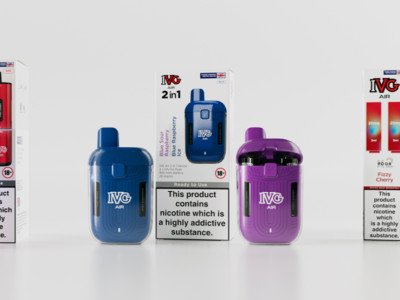“Mists containing propylene glycol, a liquid used to generate the vapor in e-cigarettes, can cause ocular and upper airway irritation,” states the research paper, oddly citing a study that looked at propylene glycol mist in aviation emergency training. If test conditions do not relate to actual vaping practice then it is hard to see how the results are relevant, and this goes for previous studies looking at PG too.
The team claim to be motivated by concerns over “recent studies [that] have measured harmful pollutants in vapour generated by e-cigarettes, including fine and ultrafine particles, reactive oxygen species, and toxic compounds associated with flavourants [sic].”
Their findings led them to state: “This study pinpoints key parameters influencing chemical emissions from e-cigarettes and identifies chemical pathways and vaping conditions that yield harmful compounds.”
In a way they did identify key parameters – but only through using the device in a manner that vapers would not. They used a simple CE4 style atomiser and a fixed head dual-coil system. Their puff machine then took 5 second puffs every thirty seconds for 10 minutes. Absolutely no vaper uses their device in this way.
“When you apply the same voltage to the double-coil e-cigarette you see a lot less emissions,” said co-author and Berkeley Lab researcher Lara Gundel. “We think it has to do with lower temperatures at each of the coil surfaces.”
They estimated that, even when pushed to this level, the atomisers released 90-100µg of acrolein. A tobacco cigarette releases 400 to 650µg of acrolein. There are two ways to look at this: as a positive step to harm reduction or, as they chose, to say, “All e-cigarettes emit harmful chemicals, but some emit more than others.”
They uncover information that offers more realistic advice for vapers. In relation to aging coils, they noted that toxin levels were increased with coils often referred to as having a build up of “coil gunk or caramelisation”.
“This effect is consistent with the buildup of polymerization byproducts on or near the coil leading to accumulation of … residues,” they say. “Heating these residues would provide a secondary source of volatile aldehydes.”
“Understanding how these compounds are formed is very important,” the study’s corresponding author Hugo Destaillats said. “One reason is for regulatory purposes, and the second is, if you want to manufacture a less harmful e-cigarette, you have to understand what the main sources of these carcinogens are.” As the University of California managed the study, we suspect it is more for the regulation and less for safer ecigs.
Photo Credit:
Images
Research team – official press release
Postulated toxin pathways – research abstract
Dave Cross
Journalist at POTVDave is a freelance writer; with articles on music, motorbikes, football, pop-science, vaping and tobacco harm reduction in Sounds, Melody Maker, UBG, AWoL, Bike, When Saturday Comes, Vape News Magazine, and syndicated across the Johnston Press group. He was published in an anthology of “Greatest Football Writing”, but still believes this was a mistake. Dave contributes sketches to comedy shows and used to co-host a radio sketch show. He’s worked with numerous vape companies to develop content for their websites.
Join the discussion
Parliament Fears Two
The Department for Environment, Food and Rural Affairs faced questions from a Conservative MP and, oddly, a member of the Department for Environment, Food and Rural Affairs
Harm Reduction For The Rich
The United Kingdom risks becoming a harm reduction country only for the wealthy, according to Michael Landl of the World Vapers’ Alliance
Sacrificing Health For 2p Cut
Tory Government alienates vaping voters with its mission to cut tax by an unaffordable 2p to attract voters by placing a tax on vape products in the forthcoming budget
Scotland Announces Single-Use Vape Action
A ban on the sale and supply of single-use vapes in Scotland is due to come into effect on 1 April 2025, under proposed legislation published today












